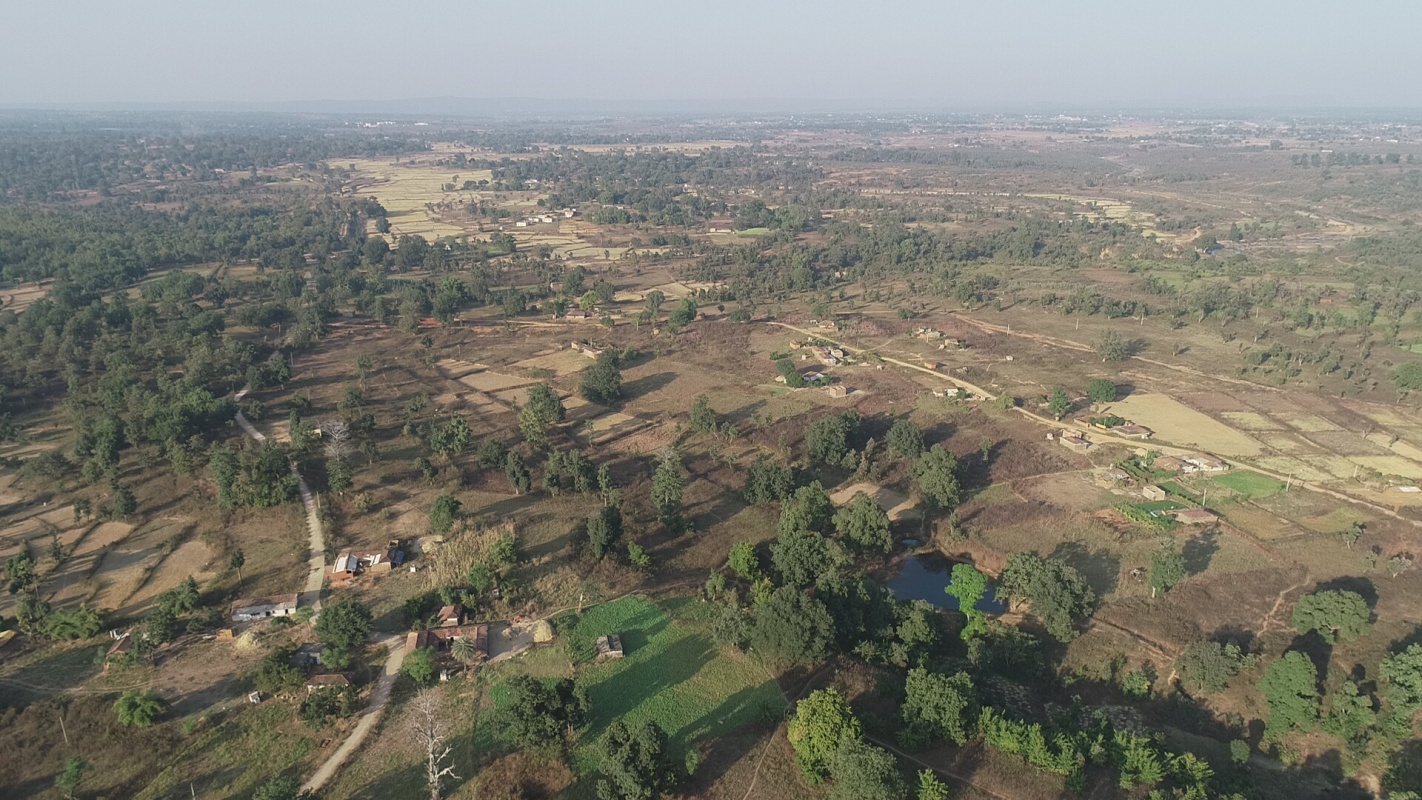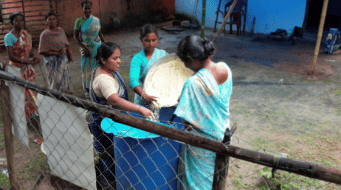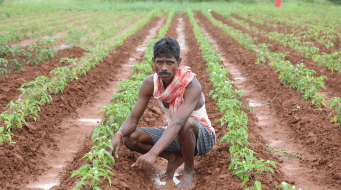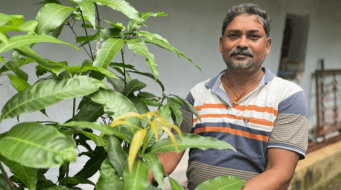-Anuradha Phadtare
Globally, climate change has impacted the socio-economic systems in different ways. However, the extent of the impact depends on various factors- the degree of climate change affecting a particular system (exposure), the characteristics of the system (sensitivity), and the ability of people and ecosystems to deal with the resulting effects (adaptive capacities of the system). Now, assessing the vulnerability to climate change is a crucial step for identifying the measures to adopt for the impacts stated above. This will also enable the practitioners and decision-makers to identify the most vulnerable areas, sectors and social groups. Also, during the course of implementation, most development projects are prone to vulnerability due to different factors. These vulnerabilities can arise from changes in external conditions: climatic and human – which are unpredictable and out of our control. If these sorts of vulnerabilities are not identified or not properly dealt with, they may result in unexpected challenges hampering the execution of the project.
After looking at all these angles, WOTR developed a tool called Community Driven Vulnerability Evaluation-Programme Designer (CoDriVE-PD) that clearly identifies the need to factor in an evaluation of all such key vulnerabilities at an early stage in the project design and subsequently integrate these variables within the project framework, so as to minimize adverse impacts and thus, have better control of the project and the achievement of desired outcomes.
CoDriVE-PD is a recombinant tool developed by converging key aspects of three known international research methodologies namely, Participatory Tool on Climate and Disaster Risks, Department for International Development-DFID’s Sustainable Livelihoods Framework and the Driver-Pressure-State-Impact-Response (DPSIR). It conducts the evaluation through a climate lens that scans the community’s perception of its situation, vis-à-vis the five livelihood capitals, encompassed by the resilience theory and systems thinking approach to synthesis and interpret the findings.
Thus, this tool helps not only in making an accurate assessment of the who, what and why of the climate risk (vulnerability), but also simultaneously helps in designing a response and later incorporating it either proactively during the design or as a mid-course intervention.
Methods of data collection:
- Focused group discussion is the method to gather people from diverse backgrounds or experiences to discuss a specific topic of interest.
- Transect walk is a tool for describing and showing the location and distribution of resources, features, landscape, main land uses along a given transect, which would help to draw inferences.
- Seasonal climate hazard calendar could also be prepared. It is a visual method of showing the distribution of seasonally varying phenomena at a glance.
-

Focus Group discussion in progress at Mardi village, Ambad block ,Maharashtra
Broadly, CoDriVE-PD does the following:
- Reviews past history and the current scenario for all climate sensitive livelihood sectors and non-farm livelihoods and other cross cutting themes like gender, health, local governance etc.
- Examines the drivers and pressures (externalities) that influence decisions, create change and vulnerabilities in communities
- Records the perceptions of climate risk by different stakeholders, its impacts and their coping and adaptation responses
- Creates systems approach maps with all the interdependencies and interactions between the capitals and sectors and their issues and problems
- Generates a vulnerability code that grades all highly sensitive and essential resources on a scale of 1 to 5, based on the five capitals– Human, Social, Natural, Physical, and Financial.
Process of articulating vulnerability
1. Sectoral analysis: In this step, past and present trend analysis is done for all climate sensitive livelihoods like agriculture, livestock, forest etc. as well as for non-farm livelihoods.
2. Identification of climate risks, impacts and responses
This step involves identification of climate risks/ hazards experienced by community in last 10 years like drought, drought like situation, high intensity rainfall, and high temperature in summer etc. which was adversely impacted on both communities and the ecosystem in certain ways. Identifying and evaluating the adaptation strategies or coping mechanisms of rural communities is very critical for policy research, project design and implementation. These responses need to be checked whether are adaptive or mal-adaptive in the long run. Hence, these responses are measured keeping effectiveness, efficiency and sustainability as the prime focus.

3. Sensitivity analysis
This step involves running a sensitivity analysis of the livelihood resources that are essential to cope with climate risks, identified in an area using a scale 1–5. The sensitivity analysis is done at two levels -1) At watershed level or village (sub-system), sector specific (like agriculture, livestock etc.) 2) At vulnerable/social groups level which are identified for ranking the livelihood resources that are classified under respective capitals. The Capital based Resilience Scale is used to grade capitals based on their adequacy where 1 = nil (0-10%), 2 = minimum (11-25%), 3 = low (26-45%), 4 = adequate (46-70%), 5 = high (71% and above). For example, in any village if water resources in the form of open wells under physical capital are non-operational, then the grade will be either 1 or 2, depending on the degree of functionality/adequacy.
 4. Arriving at final vulnerability/ resilience code: To arrive at a conclusion, in this step these resources again need to be graded on a scale of 1–5 using the Capital-based Resilience Scale where: 1 = nil (0-10%), 2 = minimum (11-25%), 3 = low (26-45%), 4 = adequate (46-70%), 5 = high (71% and above) which will indicate the vulnerability ; i.e. if these resources are adequate or high say at 4 and 5 the system under study has more resilience and hence is less vulnerable. For further clarity, vulnerability colour coding index for indicating the vulnerability based on capitals can also be used simultaneously where: Red – Danger (1), Orange – Risk (2), Yellow – Alert (3), Blue – Stable (4), Green – Safe (5).
4. Arriving at final vulnerability/ resilience code: To arrive at a conclusion, in this step these resources again need to be graded on a scale of 1–5 using the Capital-based Resilience Scale where: 1 = nil (0-10%), 2 = minimum (11-25%), 3 = low (26-45%), 4 = adequate (46-70%), 5 = high (71% and above) which will indicate the vulnerability ; i.e. if these resources are adequate or high say at 4 and 5 the system under study has more resilience and hence is less vulnerable. For further clarity, vulnerability colour coding index for indicating the vulnerability based on capitals can also be used simultaneously where: Red – Danger (1), Orange – Risk (2), Yellow – Alert (3), Blue – Stable (4), Green – Safe (5).

Use of web-based application for CoDriVE-PD:
In order to support easy, quick, and large-scale application of this tool, WOTR has developed a web-based software program that enables processing and analysis of key data with a view to generating a vulnerability profile as well as situation-specific adaptive actions to be undertaken.
Application of CoDriVE-PD:
Since last 5 years we have been using the tool across various States of Maharashtra , Telangana, Andhra Pradesh, Madhya Pradesh, Bihar, Odisha etc. WOTR has applied this tool extensively In Maharashtra in 2016 with the support from the Hindustan Unilever Foundation.
CodriVE-PD manual
This book developed in house, is a guide on using CoDriVE-PD. Organised into different sections that deal with specificity of the tool, it helps the user understand the need for a tool in today’s dynamicallychanging world.
The Link of the manual:
https://wotr.org/sites/default/files/WOTR-PD-handbook-Community%20Driven%20Vulnerability%20Evaluation%20%E2%80%93%20Programme%20Designer.pdf
*Reference of the content of this blogpost : A Handbook ,Incorporating Vulnerability to Climate Change into Project Design and Implementation






